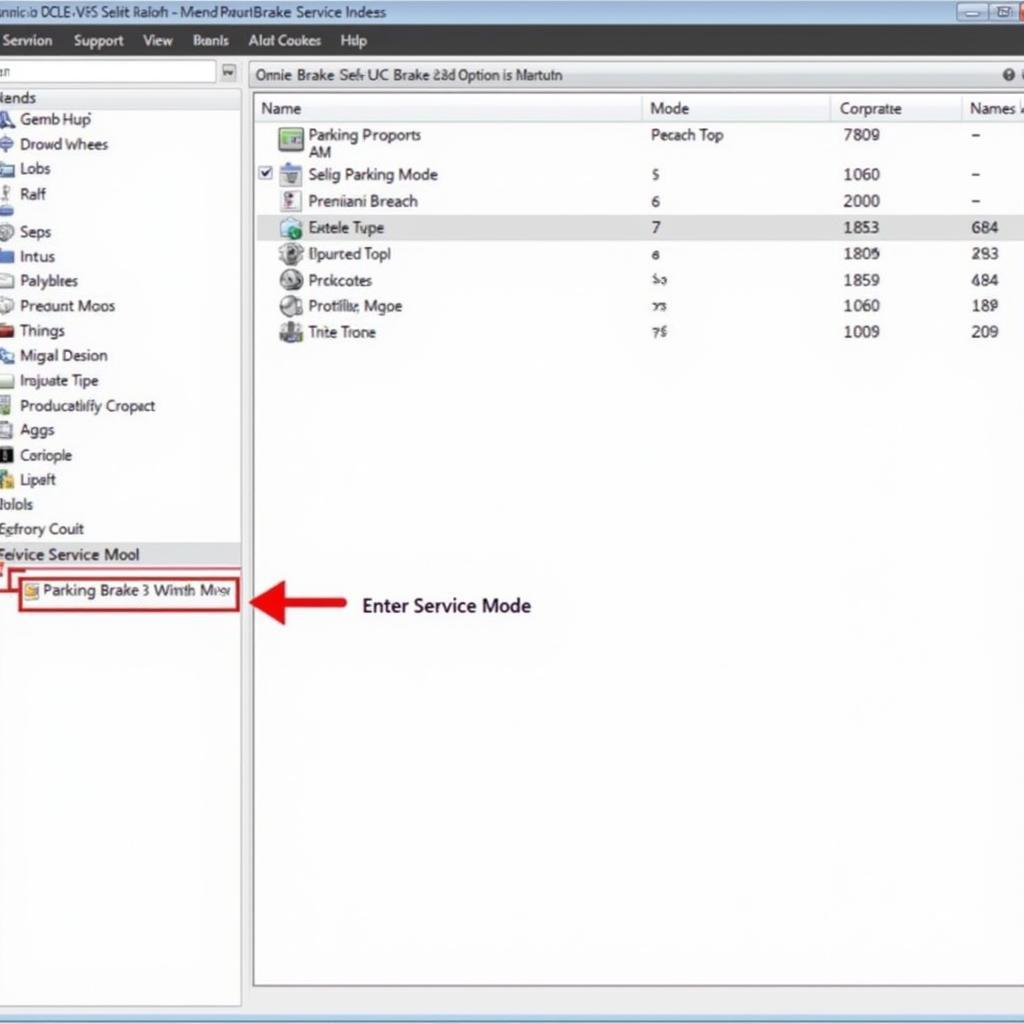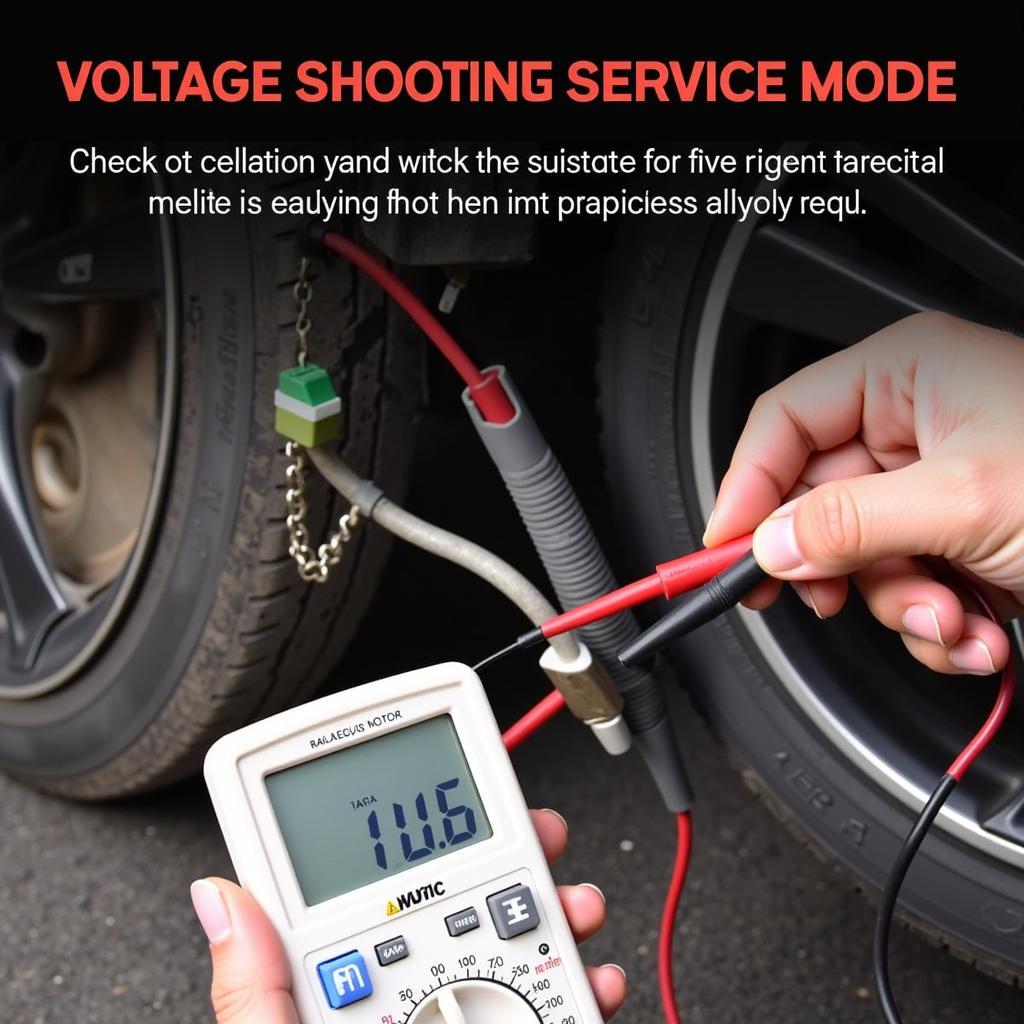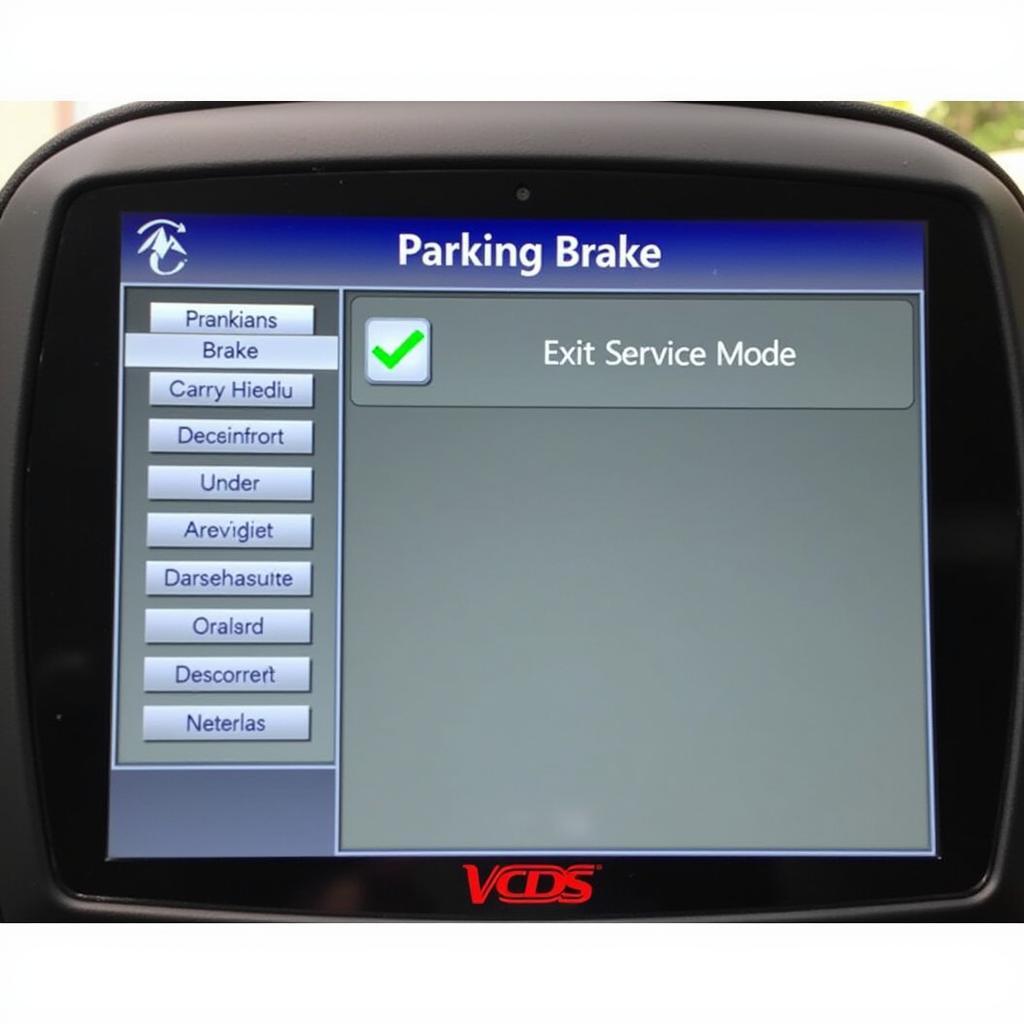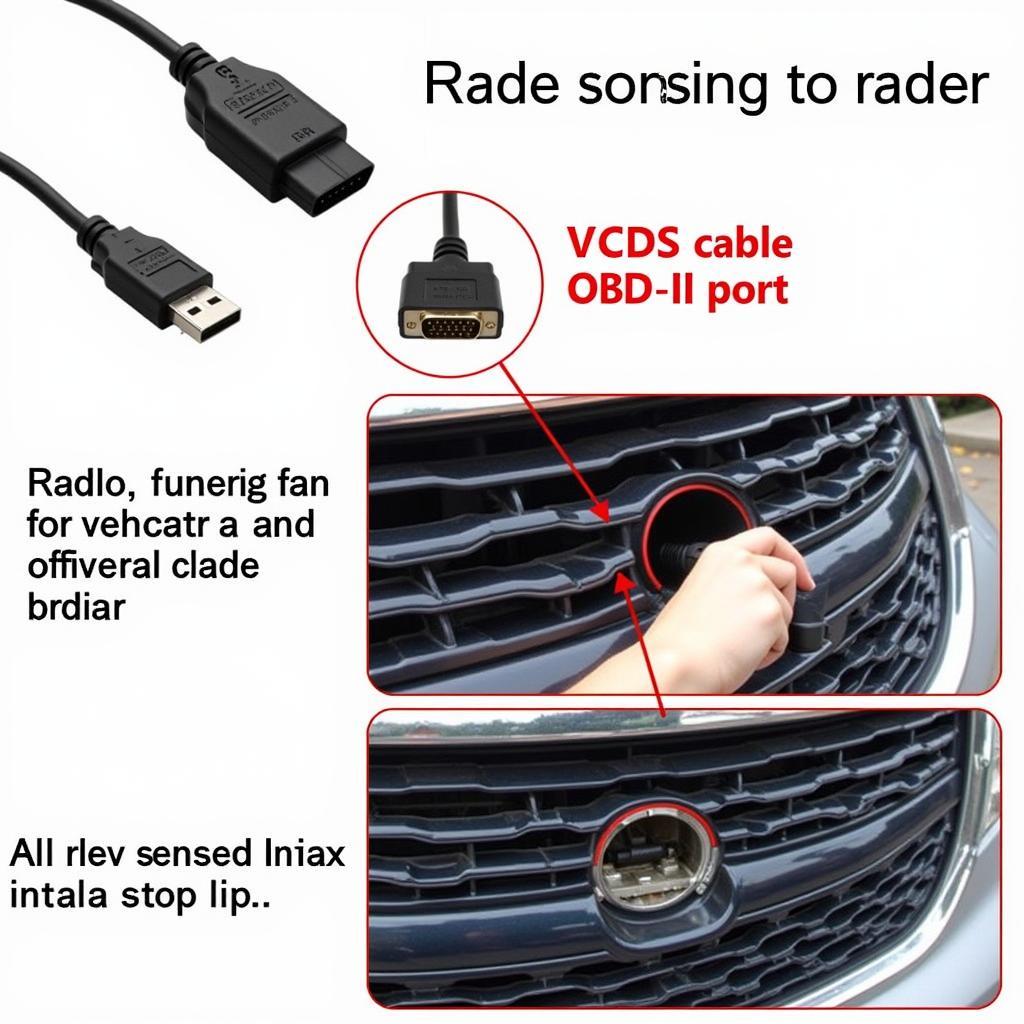VCDS parking brake service mode is a crucial function for technicians working on Volkswagen, Audi, Seat, and Skoda vehicles. This mode allows for safe and efficient maintenance and repair of the electronic parking brake system. Understanding how to properly engage and disengage this mode is essential for preventing damage to the system and ensuring a smooth repair process.
What is VCDS Parking Brake Service Mode?
The VCDS parking brake service mode, also known as the “EPB service mode”, is a diagnostic function accessed through the VCDS software. It retracts the electronic parking brake calipers, allowing for pad replacement, disc rotor changes, or other brake system maintenance. This mode is necessary because attempting to work on the brakes with the electronic parking brake engaged can damage the actuators or other components. Similar to a vcds brake bleed, this procedure requires precision and understanding of the system.
How to Engage VCDS Parking Brake Service Mode?
Engaging the VCDS parking brake service mode is a straightforward process when followed correctly. First, connect your VCDS interface to the vehicle’s OBD-II port and launch the software. Select the correct vehicle model and year. Navigate to the “Parking Brake” module. Within this module, you’ll find the option to “Enter Service Mode.” Click this option, and the parking brake calipers will retract, giving you access to the brake components. Remember, safety is paramount. Ensure the vehicle is on a level surface and securely chocked before engaging this mode.
 VCDS Parking Brake Service Mode Engagement Screen
VCDS Parking Brake Service Mode Engagement Screen
How to Disengage VCDS Parking Brake Service Mode?
After completing your brake service, it’s crucial to properly disengage the service mode. In the same “Parking Brake” module within VCDS, you’ll find the option to “Exit Service Mode.” Click this button. The parking brake will then automatically recalibrate itself and return to normal operation. It’s also recommended to perform a functional test to ensure the parking brake is working correctly after exiting the service mode. For those working on a Volvo, you might find the volvo vcds guide useful.
Common Issues with VCDS Parking Brake Service Mode
Sometimes, you might encounter issues when trying to engage or disengage the service mode. A low vehicle battery voltage can prevent the system from entering or exiting the service mode. Other potential problems include faulty wiring, a malfunctioning parking brake module, or issues with the VCDS software itself. Troubleshooting these issues often involves checking the vehicle’s electrical system, verifying the VCDS software version, and inspecting the wiring harness for damage. A similar process might be encountered when addressing issues related to vcds release.
 Troubleshooting VCDS Parking Brake Issues
Troubleshooting VCDS Parking Brake Issues
Why Use VCDS for Parking Brake Service?
Using VCDS for parking brake service provides several advantages. It allows for precise control over the electronic parking brake system. This reduces the risk of damage to the components and ensures a safe and efficient repair process. Furthermore, VCDS offers advanced diagnostic capabilities, allowing technicians to pinpoint the root cause of any parking brake issues. This can save time and money compared to traditional diagnostic methods. You can find more information about VCDS usage in a 2015 jetta vcds context.
Expert Insights
John Smith, a seasoned automotive technician with over 20 years of experience, emphasizes, “Using VCDS for parking brake service is a game-changer. It eliminates the guesswork and allows for precise, controlled maintenance. It’s an indispensable tool for any modern workshop.”
Maria Garcia, a leading expert in automotive diagnostics, adds, “Properly understanding and utilizing VCDS parking brake service mode is essential for any technician working on vehicles with electronic parking brakes. It’s a key skill that can significantly improve efficiency and reduce repair times.”
Conclusion
VCDS parking brake service mode is a vital function for modern automotive repair. Understanding how to engage and disengage this mode correctly is crucial for ensuring safe and efficient brake maintenance. By following the outlined procedures and addressing common issues, technicians can effectively utilize this feature to provide top-quality service. Remember to always prioritize safety and consult the vehicle’s service manual for specific instructions. Proper use of VCDS parking brake service mode can significantly improve your workflow and minimize the risk of damage to the vehicle’s braking system. For those dealing with brake pad replacements, the passat b6 rear brake pads replacement vcds article offers further guidance.
 Exiting VCDS Parking Brake Service Mode
Exiting VCDS Parking Brake Service Mode
FAQ
-
What is VCDS?
VCDS is a diagnostic software used for Volkswagen, Audi, Seat, and Skoda vehicles. -
Why do I need to use service mode for the parking brake?
Service mode retracts the calipers, allowing for safe maintenance without damaging the system. -
What if the service mode doesn’t engage?
Check the battery voltage, wiring, and VCDS software version. -
How do I exit the parking brake service mode?
Use the “Exit Service Mode” button in the VCDS software. -
Is it safe to drive with the service mode engaged?
No, it is unsafe to drive with the service mode engaged. -
What should I do after exiting the service mode?
Perform a functional test to ensure the parking brake is working correctly. -
Where can I find more information on VCDS?
Visit the CARDIAGTECH website for more resources and guides.
Need help? Contact us via WhatsApp: +1 (641) 206-8880, Email: CARDIAGTECH[email protected] or visit us at 276 Reock St, City of Orange, NJ 07050, United States. We offer 24/7 customer support. Check out our other articles on VCDS usage and specific car models for more in-depth information.

